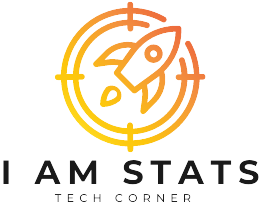In this digital age, computers have become an integral part of our lives. From the bulky mainframes of the past to the sleek smartphones we carry in our pockets today, computing technology has come a long way. Join us on a journey as we trace the evolution of computing through the ages and explore the fascinating milestones that have shaped our modern digital world.
Key Takeaways:
- Computing technology has evolved from bulky mainframes to sleek smartphones.
- The history of computing includes significant milestones such as the creation of the first electronic general-purpose computer, ENIAC.
- The transition from mainframe computers to microprocessors revolutionized the accessibility and power of computing.
- The rise of personal computers, driven by companies like Apple and Microsoft, transformed various industries and made computing more user-friendly.
- The emergence of the internet and mobile computing brought about a new era of connectivity and convenience.
The Long Road to Modern Computing
In the fascinating journey of computing, it is crucial to understand the history behind its development. The early computers laid the foundation for the advanced technology we have today. Let’s explore the rich history of computing and the key milestones that shaped its evolution.
One of the significant breakthroughs in the history of computing was the creation of the ENIAC, the first electronic general-purpose computer. Developed during the 1940s, the ENIAC revolutionized computation, introducing a new era of electronic computing machines.
The ENIAC, although massive in size, was capable of performing calculations that were previously done manually, saving time and increasing accuracy. Its impact cannot be overstated, as it paved the way for the development of future computers.
As technology progressed, early computers continued to evolve, leading to major advancements in computing capabilities. From the first computers that took up entire rooms to more streamlined machines, each innovation built upon its predecessor.
“The history of computing is a testament to human curiosity, ingenuity, and the relentless pursuit of progress.”
During this time, other notable developments took place, like the introduction of punch cards and the creation of transistor-based computers. These innovations set the stage for rapid advancements in computing technology and the eventual birth of personal computers.
The First Computers: A Glimpse into the Revolution
Before the era of personal computers, early computers were primarily used for scientific and military purposes. These machines, often housed in large rooms, were efficient in performing complex calculations and data processing tasks.
One iconic example is the UNIVAC I, the first commercially available computer. It was introduced in the early 1950s and played a crucial role in the development of business and scientific computing.
| Early Computers | Description |
|---|---|
| ENIAC | The first electronic general-purpose computer that revolutionized computation. |
| UNIVAC I | First commercially available computer, influencing business and scientific computing. |
The UNIVAC I and other early computers served as the stepping stones towards the computing revolution we witness today. They were the precursors to the powerful machines and smart devices that have become an indispensable part of our lives.
Through the history of computing, we can see how far we have come and the immense potential for future innovations. The road to modern computing has been paved with incredible achievements and continues to bring us closer to new frontiers of technology.
Mainframes to Microprocessors: A Shift in Power
As the world entered the era of computing, mainframe computers were at the forefront of technological advancements. These colossal machines, often occupying entire rooms, were the backbone of large organizations, handling complex tasks and calculations. But their size and cost limited their accessibility to only a select few.
However, everything was about to change with the emergence of microprocessors. These tiny yet powerful chips revolutionized the computing landscape, bringing the power of mainframe computers within the reach of everyday users.
One key player in this transition was IBM. The American technology company played a pivotal role in the development and popularization of both mainframe computers and microprocessors. IBM’s mainframe computers dominated the market, providing unparalleled computing power for industries like finance, healthcare, and government.
“IBM introduced the System/360 in 1964, a family of compatible mainframe computers that set the industry standard. These machines were capable of handling tremendous volumes of data, making them invaluable tools for businesses and organizations.”
However, as technology advanced, the limitations of the mainframe became apparent. The need for more compact and affordable computing solutions paved the way for microprocessors.
Microprocessors, developed by companies such as Intel and Motorola, combined the essential components of a computer (central processing unit, memory, and input/output circuits) onto a single chip. This technological breakthrough allowed for the creation of smaller, more affordable, and portable computers.
With the birth of personal computers, individuals could now enjoy the benefits of computing power right at their fingertips. The advent of microprocessors brought about a democratization of technology, transforming computing from a luxury reserved for large organizations to an indispensable tool for people from all walks of life.
The Impact of Microprocessors
Microprocessors revolutionized the world of computing in several ways. Here are some key highlights:
- Portability: Microprocessors enabled the development of smaller and more lightweight computers, making computing accessible on-the-go.
- Affordability: The compact size and cost-effectiveness of microprocessors made computers more affordable for individuals and small businesses.
- User-Friendly Interfaces: Microprocessors facilitated the creation of user-friendly graphical interfaces, making computers easier to navigate and interact with.
- Increased Processing Speed: The improved processing capabilities of microprocessors allowed for faster calculations and data processing.
To visualize the transition from mainframe computers to microprocessors, take a look at the timeline below:
| Year | Development |
|---|---|
| 1944 | The Harvard Mark I, a large electromechanical computer, is completed. |
| 1951 | UNIVAC I, the first commercial computer, is unveiled. |
| 1964 | IBM releases the System/360, a family of compatible mainframe computers. |
| 1971 | Intel introduces the first microprocessor, the Intel 4004. |
| 1976 | Apple Computer introduces the Apple I, a personal computer using a microprocessor. |
| 1981 | IBM launches the IBM Personal Computer (IBM PC), solidifying the popularity of microcomputers. |
This image showcases the size difference between mainframe computers and microprocessors, highlighting the monumental shift in computing power and accessibility. With this transition, personal computers became a driving force in shaping modern technology and society.
Stay tuned for the next section, where we explore the personal computer revolution and the profound impact it had on the world.
The Personal Computer Revolution: How PCs Changed the World
In the world of technology, few advancements have had as profound an impact as the personal computer revolution. This groundbreaking era saw the birth of personal computers that changed the way we live, work, and communicate.
Companies like Apple and Microsoft played pivotal roles in this revolution, shaping the landscape of computing as we know it. Apple, founded by Steve Jobs and Steve Wozniak, brought us the iconic Macintosh with its sleek design and innovative features. Microsoft, led by Bill Gates and Paul Allen, introduced the widely popular Windows operating system, which became the foundation for millions of PCs worldwide.
One of the key milestones during this era was the introduction of graphical user interfaces (GUI). Instead of relying on complex command lines, GUIs allowed users to interact with computers through visual elements like icons, windows, and buttons. This breakthrough made personal computers more accessible and user-friendly, opening up new possibilities for people of all backgrounds.
“The GUI was a game-changer in the world of computing. It revolutionized the way we interacted with technology and democratized access to computers.” – Tech expert
With GUIs, tasks that were once daunting and complicated became intuitive and simple. The ability to navigate through menus, click on icons, and drag and drop files made computing a more enjoyable and efficient experience. This transformative shift brought computers out of the realm of experts and into the hands of everyday individuals.
The impact of personal computers extended far beyond the individual user. Various industries were transformed by this revolution. The fields of design, publishing, and music production, among others, saw tremendous advancements due to the capabilities of personal computers. Professionals were now able to create, edit, and share their work with unprecedented ease and speed.
The Influence of Personal Computers:
- Empowered individuals to explore new frontiers of creativity and productivity.
- Revolutionized industries such as graphic design, publishing, and music production.
- Enabled widespread access to information and communication through the internet.
The personal computer revolution paved the way for many of the technologies and conveniences we enjoy today. From online shopping and social media to remote work and cloud storage, the foundations were laid by the PCs of yesterday.
As we reflect on the evolution of personal computers, it becomes clear that they have truly changed the world. The vision and innovation of companies like Apple and Microsoft, combined with the introduction of GUIs, shaped the future of computing and propelled us into a new era of connectivity, efficiency, and endless possibilities.
The Rise of the Internet and Mobile Computing
The rapid advancement of technology has led to the rise of the internet and mobile computing, transforming the way we connect, communicate, and access information. Smartphones and tablets have become essential tools in our daily lives, providing convenience and connectivity at our fingertips.
Connectivity on the Go
Gone are the days when we had to rely on desktop computers to access the internet. With the advent of smartphones and tablets, we can now connect to the internet anytime, anywhere. Whether you’re browsing the web, checking emails, or staying updated on social media, these mobile devices have made it easier than ever to stay connected on the go.
Access to Information
Thanks to mobile computing, we now have access to a wealth of information right at our fingertips. From searching for answers to trivia questions, to reading news articles, to learning new skills through online courses, smartphones and tablets have become our go-to devices for instant access to knowledge. The internet has truly become a vast repository of information, and mobile computing has made it more accessible than ever.
“With smartphones and tablets becoming increasingly powerful, we now have the world’s knowledge in the palm of our hands.” – [Author Name]
Communication Made Easy
Mobile computing has revolutionized communication, making it easier and more convenient than ever before. Whether it’s making phone calls, sending text messages, or video chatting with loved ones, smartphones have become our primary means of staying connected with others. Social media platforms and messaging apps have also become integral parts of our social lives, allowing us to share moments, thoughts, and experiences with our friends and family.
The Future of Mobile Computing
As technology continues to advance, the future of mobile computing looks promising. With the advent of 5G networks, the speed and reliability of internet connections on mobile devices will further improve, leading to more seamless experiences. Additionally, the integration of artificial intelligence and augmented reality into smartphones and tablets will open up new possibilities for entertainment, productivity, and much more.
In conclusion, the rise of the internet and mobile computing has transformed the way we live, work, and interact with the world around us. Smartphones and tablets have become indispensable tools, providing us with connectivity, information, and communication at our fingertips. As technology continues to evolve, we can expect even more exciting advancements in the field of mobile computing, shaping the future of our digital lives.
Conclusion
In conclusion, the evolution of computing has been a remarkable journey that has transformed the world as we know it. Each innovation, from the clunky mainframes of the past to the powerful smartphones of today, has built upon the previous one, pushing the boundaries of what is possible in technology.
Computing has had a profound impact on our lives, revolutionizing the way we live, work, and connect with others. It has made complex tasks simpler, opened up new opportunities, and empowered individuals and businesses around the globe.
Looking to the future, the possibilities are even more exciting. As technology continues to advance at an unprecedented rate, we can expect computing to play an increasingly integral role in our daily lives. From artificial intelligence and machine learning to virtual and augmented reality, the future of computing holds endless potential.







